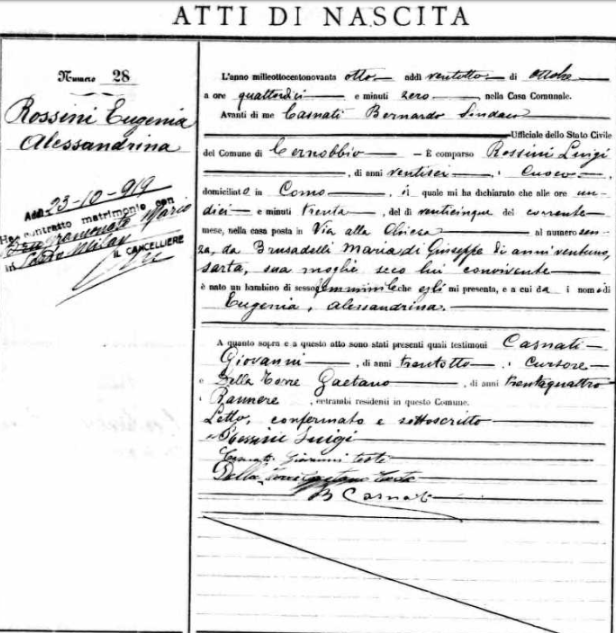Across centuries of recorded history, many classes of people have had to legally register themselves—voters, military-aged men, free people of color in slave regimes, aliens during a time of war, and "just plain folk" on the occasions of their births, marriages, and deaths.
Because registrations are intrinsically personal, because they are individualized, our citations to a registration will typically name the key persons involved. We should also render those names exactly as they appear in each original record. If we feel a correction of the spelling is needed, we place our correction in square editorial brackets immediately after the official spelling.
In our own personal writing, of course, we follow a different practice. Our narrative about a person will identify him or her by a consistent spelling. The consistent spelling that we adopt will typically be the one by which the person most commonly appears in surviving records. If the person was literate and we have signature samples, then our consistent spelling would be the one found in those signatures.
The reason why our approach differs between the text and the citation is this: Our narrative talks about the person. Our citation focuses on the record, not the person. If we do not precisely identify the record—if we do not report the name exactly as it appears in that record—then we'll create a problem for any future person (or ourselves at a later date) when the record needs to be relocated.
PHOTO CREDIT: Cernobbio (Como), Lombardy, Italy, “Registro degli Atti di Nascita [Register of the Acts of Birth; or Birth Registrations], 1898”: entry 28, "Rossini, Eugenia Alessandrina," 14 August 1798; image accessed as "Como and Lecco, Lombardy, Italy, Civil Registration Records, 1866–1936 (in Italian)," database with images, Ancestry.com (www.ancestry.com : accessed 2 December 2014).
